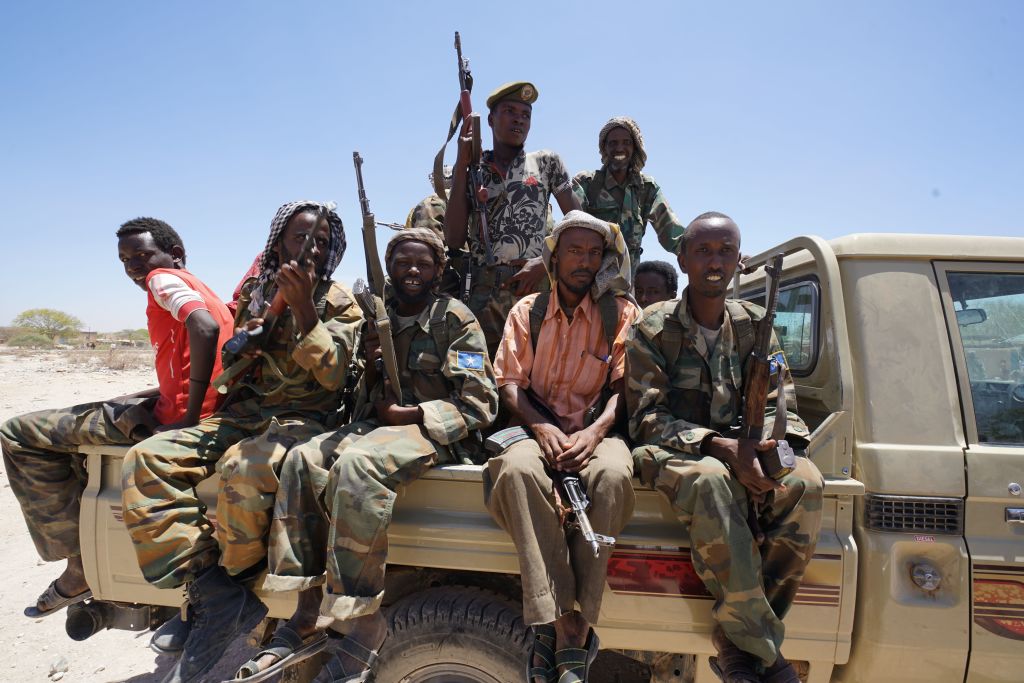ADF STAFF
Community fighters are taking the lead in Somalia’s fight against al-Shabaab as the government switches tactics against the group.
The Somali government launched the second phase of operations meant to eliminate al-Shabaab in August. The clan militias, locally known as “Ma’awisley,” will focus on the central Hirshabelle and Galmudug states.
The government pays the fighters monthly stipends and may eventually integrate them into the national Army. Former national intelligence chief Brig. Gen. Abdirahman Turyare is helping mobilize the local fighters.
“The current mobilization is different from the mobilization that was taking place in the past few months, which only focused on the national armed forces,” Turyare told Voice of America. “The plan is to remobilize the armed forces, rest some of those soldiers who have been in the front line for a year and a half, replace them with the newly trained forces, and remobilize the Ma’awisley [local militias] and to let the local community lead the fight.”
The government also provides clan militias with logistical support, ammunition, food and medical evacuations. The clans connect the army to the local populations and demonstrate that civilians have turned against al-Shabaab, according to the International Crisis Group.
A similar strategy helped the government and local fighters seize vast areas from al-Shabaab between August 2022 and January 2023. During that effort, the Somali National Army and Ma’awisley fighters liberated 70 communities including Rage-El, a village liberated after 13 years under al-Shabaab control.
The offensive reclaimed about one-third of the territory controlled by al-Shabaab. The Somali government also reported that 3,000 militants were killed and more than 3,700 others wounded in the first phase of attacks with help from local fighters, some of whom are elderly.
“They are natural warriors,” Hussein Sheikh Ali, Somalia’s national security advisor, told Foreign Policy magazine. “Everyone wants to have a gun if they want to survive.”
Some observers fear that the plan to use local militias is rushed, while others acknowledge that the fight against terrorists will be challenging for nonprofessional forces.
Some “clans remain divided in their support for al-Shabaab and the government based on who controls the areas where each clan is prominent,” the Armed Conflict Location & Event Data Project (ACLED) reported. “This division plays a critical role in how the counter-insurgency operation unfolds.”
Given al-Shabaab’s resilience, Somali Petroleum and Natural Resources Minister Abdirizak Omar Mohamed, a former internal security minister, is adamant that the government not underestimate the group.
“Al-Shabab is not the underdog here,” Mohamed told Foreign Policy. “We consider they are very much a resilient organization, very much adaptable organization, but we believe that with the public support, and with the mobilization of local communities … the Somali government will prevail in this war against al-Shabab.”
Violence among al-Shabaab and Somali security forces, including Ma’awisley, reached a fever pitch in Hirshabelle and Galmudug states after the second phase began.
“Political violence” increased by more than 70% in those states between mid-August and mid-September, according to ACLED. The violence included 236 battles and 100 incidents of explosions or violence in remote areas. Both Hirshabelle and parts of Galmudug are in the Gallaudet region.
Somali forces and local militias took control of several locations in the Galgaduud region, but al-Shabaab regained some territory after security officers and clan militias abandoned their positions on the frontline, ACLED reported. Somali forces and clan militias have also clashed with al-Shabaab in the Middle Shabelle region, which borders Galgaduud, during the second counter-insurgency phase.
Battles continue as the African Union Transition Mission in Somalia (ATMIS) withdraws from the country. By the end of June, 2,000 ATMIS Soldiers left Somalia and another 3,000 ATMIS troops are expected to withdraw by the end of September. ATMIS has until December 2024 to hand over full security responsibilities to Somalia.

